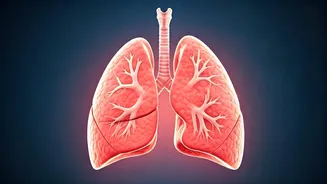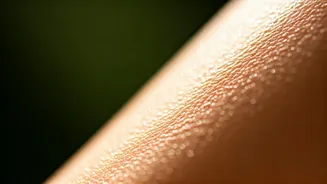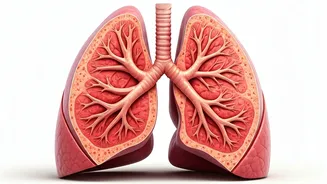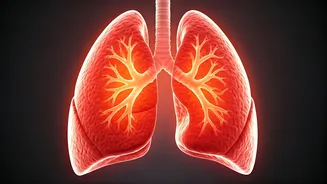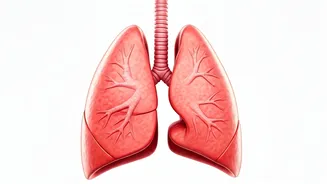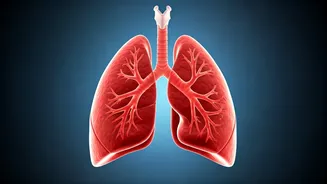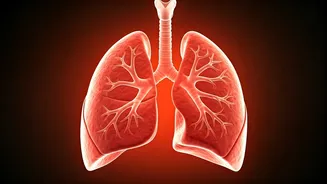Introduction to Yoga
Yoga, an ancient Indian practice, offers a holistic approach to wellness. It combines physical postures (asanas), breathing techniques (pranayama), and
meditation to improve physical, mental, and spiritual health. During Diwali, the air quality often deteriorates due to firecrackers and other festivities, increasing the risk of respiratory problems. Practicing yoga can be a proactive way to mitigate these effects. Breathing exercises are especially beneficial, as they can enhance lung capacity and cleanse the respiratory system, countering the negative impacts of pollution. Before starting any new exercise routine, especially if you have existing health issues, consulting with a healthcare professional is crucial. Consider practicing in a ventilated space to ensure you're getting the most out of your yoga session.
Cobra Pose (Bhujangasana)
Bhujangasana, or the Cobra Pose, is a gentle backbend that opens the chest and lungs. To perform this pose, start by lying on your stomach with your legs extended and the tops of your feet pressing into the floor. Place your hands under your shoulders, with your elbows close to your body. As you inhale, slowly lift your chest off the floor by straightening your arms and arching your back. Hold the pose for a few breaths, then gently lower your chest back down. Cobra Pose is excellent for increasing oxygen intake and improving lung function. By stretching the chest and abdominal muscles, it enhances the expansion of the lungs, allowing for deeper breaths. This increased oxygen flow can counteract the effects of polluted air, promoting clearer and more efficient breathing. Regular practice can improve posture and alleviate mild back pain, adding to the pose's numerous health benefits.
Anulom Vilom (Alternate Nostril)
Anulom Vilom, or alternate nostril breathing, is a powerful breathing exercise (pranayama) that can significantly improve lung health. To start, sit comfortably with your spine straight. Use your right thumb to close your right nostril and inhale deeply through your left nostril. Then, close your left nostril with your ring finger and release your right thumb, exhaling through your right nostril. Inhale through your right nostril, then close it and exhale through the left. Continue this cycle for several minutes. Anulom Vilom balances the nervous system, reduces stress, and increases oxygen levels in the blood. It helps to clear nasal passages and improve respiratory function. Regular practice can calm the mind, which is particularly beneficial during stressful times like Diwali. Ensure you practice in a well-ventilated space to maximize the benefits of this breathing exercise.
Kapal Bhati (Skull Shining)
Kapal Bhati is another effective pranayama technique for purifying the lungs. Sit comfortably with your spine straight. Inhale deeply through both nostrils, and then exhale forcefully, contracting your abdominal muscles to push the air out. The inhalation should be passive; the focus is on the forceful exhalation. Continue this rapid exhalation and passive inhalation rhythmically. Kapal Bhati cleanses the respiratory system by removing toxins and strengthening the abdominal muscles. It also increases lung capacity and improves the flow of oxygen. Practicing Kapal Bhati can help to alleviate the effects of pollution by clearing the airways and enhancing overall respiratory function. Remember, it is advisable to practice this in a ventilated area, especially considering the higher levels of air pollution often associated with the Diwali period. Those with heart conditions should take care when doing kapal bhati.
Ustrasana (Camel Pose)
Ustrasana, or the Camel Pose, is a more advanced backbend that deeply opens the chest and stretches the lungs. To perform this pose, kneel on the floor with your knees hip-width apart. Place your hands on your lower back for support, and gently arch your back, reaching back to grasp your heels. If you cannot reach your heels, modify the pose by keeping your hands on your lower back or using blocks to support your hands. Hold the pose for a few breaths, keeping your chest open. The Camel Pose expands the chest cavity, promoting deeper breathing and increased oxygen intake. It helps to release tension in the chest and abdomen, improving lung capacity and efficiency. While this pose is beneficial, it's essential to practice it with caution and listen to your body, especially if you have any back or neck issues. Consult with a healthcare provider before beginning.
Important Considerations
When practicing these yoga poses, especially during times of heightened pollution like Diwali, it is crucial to take certain precautions. Always practice in a well-ventilated area, preferably indoors with good airflow, especially when the air quality is poor. Listen to your body and avoid overstraining. If you have any pre-existing health conditions, especially respiratory or cardiac issues, consult with a healthcare professional before starting any new exercise regimen. Practice these poses with awareness and mindfulness, focusing on your breath and enjoying the process. Incorporate these yoga poses into your Diwali routine to support your lung health and enjoy the festive season with a sense of well-being. Proper practice, combined with a healthy lifestyle, will help to counter the negative impacts of pollution and maintain your respiratory health.
